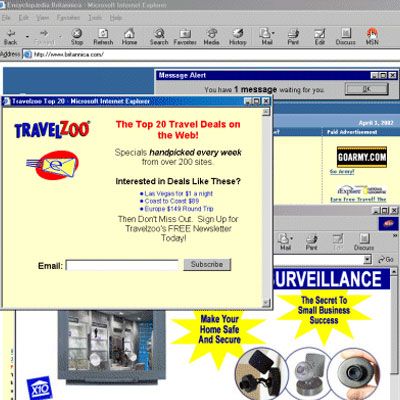
In the mid-1990s, Ethan Zuckerman worked for Tripod.com, one of the first free web-hosting services for creating personal websites. Zuckerman, now director of the Center for Civic Media at MIT, believed deeply in the ethos of the early internet, a global public square where every voice had equal footing. But keeping Tripod free to users meant that revenue had to come from somewhere else. Like millions of other web companies, they chose advertising.
Soon Tripod was selling online ad space directly on Tripod-hosted personal websites, which worked fine until a major car company noticed that one of its ads was posted on a site celebrating anal sex. Zuckerman, believing he was acting in the best interest of both the advertiser and internet users alike, wrote some code to display the car ad in a separate browser window instead of on the kinky sex page.
Advertisement
Zuckerman had just invented the pop-up ad.
Pop-up ads spread across the nascent internet like a plague. Pop-ups were beloved by advertisers because they flung the company's message in front of as many eyeballs as possible. Even better, users had to physically close the window, which forced them to interact with the ad, if only for a second. Blinded by the novelty and blanket exposure of the pop-up format, advertisers didn't foresee the user backlash.
It didn't take long for pop-ups to become the most universally hated part of online life. By the early 2000s, pop-up blockers were standard on most web browsers and the worst of the pop-up era was over. But that doesn't mean that advertisers stopped looking for "creative" ways to grab our attention online.
Advertisement

